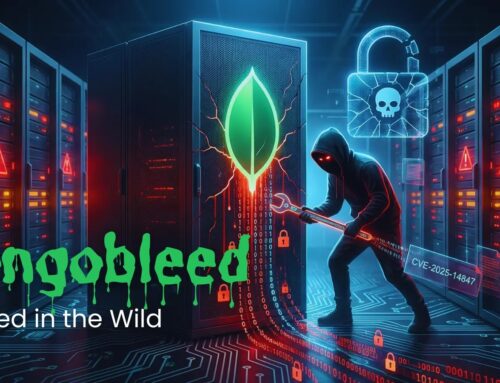
UK Arrested 2 Scattered Spider Hackers Linked to London Transport System Breach
UK Strikes Back: Two Scattered Spider Hackers Apprehended, London Transport Breach Connection Uncovered
The digital battleground saw a significant victory for law enforcement recently, as UK authorities announced the arrest of two individuals linked to the notorious Scattered Spider cybercriminal group. These arrests mark a crucial step in disrupting a prolific threat actor responsible for a staggering scale of cybercrime, including connections to the London transport system breach. This development underscores the relentless pursuit of cybercriminals and the growing collaboration between international agencies to dismantle these sophisticated operations.
Who is Scattered Spider? Unpacking a Persistent Threat
Scattered Spider, also known by other monikers such as UNC3944, MDEV-0950, and 0ktapus, has emerged as one of the most impactful and financially devastating cybercriminal groups in recent years. Their modus operandi frequently involves sophisticated social engineering tactics, often targeting employees with privileged access to corporate networks. Initially gaining notoriety for SIM-swapping attacks, their capabilities have evolved to include extensive credential harvesting, phishing, and the deployment of ransomware. The group is particularly adept at exploiting human vulnerabilities, often leveraging insider threats or manipulating help desk personnel to gain initial access to high-value targets. Their operations have resulted in significant financial losses, with the recent arrests highlighting over $115 million in ransom payments linked to their activities.
The Arrests: A Critical Blow to Scattered Spider Operations
The UK’s National Crime Agency (NCA) led the operation, culminating in the arrests of two individuals suspected of involvement with Scattered Spider. Most notably, 19-year-old Thalha Jubair from London was apprehended. He faces charges related to an astonishing 120 network intrusions. This arrest signifies a major breakthrough, signaling the erosion of anonymity for even technically proficient cybercriminals operating within these groups. The impact of these arrests extends beyond just two individuals; it disrupts the group’s infrastructure, potentially compromises their operational security, and sends a strong message to other aspiring cybercriminals that law enforcement is actively pursuing them.
London Transport System Breach: A Case Study in Critical Infrastructure Risk
While the initial report broadly connects the apprehended individuals to the London transport system breach, the specifics of this incident are still under investigation. However, such a breach against critical national infrastructure like a transport system underscores the severe implications of Scattered Spider’s activities. Attacks on critical infrastructure can lead to widespread disruption, endanger public safety, and erode trust in public services. This incident serves as a stark reminder of the need for robust cybersecurity defenses across all sectors, particularly those deemed essential for national security and public well-being. It’s crucial for organizations managing critical infrastructure to prioritize their defensive strategies against evolving threats like those posed by Scattered Spider.
Remediation Actions: Fortifying Defenses Against Social Engineering and Ransomware
The Scattered Spider arrests offer valuable lessons for organizations seeking to bolster their cybersecurity posture. Their reliance on social engineering and credential theft necessitates a multi-layered defense strategy. Here are key remediation actions:
- Strengthen Employee Education: Regular, immersive cybersecurity training focusing on identifying phishing attempts, social engineering tactics, and the dangers of disclosing credentials is paramount. Include simulated phishing exercises.
- Implement Multi-Factor Authentication (MFA) Everywhere: Mandate robust MFA for all critical systems and accounts. This includes utilizing hardware tokens or FIDO2-compliant solutions where possible, as they are more resistant to phishing than SMS-based MFA.
- Principle of Least Privilege (PoLP): Ensure users and systems only have the minimum necessary access rights to perform their functions. Regularly review and revoke unnecessary permissions.
- Endpoint Detection and Response (EDR) Solutions: Deploy EDR solutions across all endpoints to continuously monitor for suspicious activity, detect anomalies, and enable rapid response to threats.
- Robust Incident Response Plan: Develop, test, and regularly update a comprehensive incident response plan. This plan should clearly define roles, responsibilities, communication protocols, and containment strategies in the event of a breach.
- Regular Vulnerability Management: Conduct regular vulnerability assessments and penetration testing to identify and remediate weaknesses in your network and applications. Patch systems promptly.
- Supply Chain Security: Thoroughly vet and monitor third-party vendors and their security practices, as attackers often exploit weaknesses in the supply chain to gain access to target organizations.
- Behavioral Analytics: Utilize user and entity behavior analytics (UEBA) to detect unusual login patterns, access attempts, or data transfers that could indicate a compromised account.
Conclusion: A Continuous Fight Against Evolving Cyber Threats
The arrests of these two individuals linked to Scattered Spider are a testament to the ongoing global efforts to combat cybercrime. While a significant achievement, it’s important to recognize that the threat landscape is dynamic. Cybercriminal groups constantly evolve their tactics and techniques, making continuous vigilance and adaptive security strategies essential. Organizations must prioritize robust security measures, invest in employee training, and foster a culture of cybersecurity awareness to effectively defend against sophisticated adversaries like Scattered Spider. The fight against cybercrime is a marathon, not a sprint, and every victory, like these arrests, contributes to a safer digital ecosystem.





